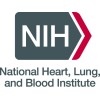
National Health and Nutrition Examination Survey IV (NHANES (IV)
Cardiovascular DiseasesCoronary Disease4 moreTo supplement the fourth National Health and Nutrition Examination Survey protocol to include data on the common heart, vascular, lung, and blood diseases.

Speech Characteristics in Coronary Heart Disease
Cardiovascular DiseasesHeart Diseases1 moreTo improve the predictive validity of Structured Interview assessments of Type A behavior by comparing interviewer techniques in the Multiple Risk Factor Intervention Trial (MRFIT) and the Western Collaborative Group Study (WCGS). To assess whether there were interviewer differences in the predictiveness of Type A behavior and its components for coronary heart disease incidence in MRFIT and WCGS and if so, to assess whether the interviewer differences in disease predictiveness were related to interviewer stylistics.

Epidemiology of Decline in Heart Disease Mortality
Cardiovascular DiseasesHeart Diseases1 moreTo continue a study of premature coronary heart disease mortality among men and women aged 35-54 in Allegheny County, Pennsylvania.

Prognostic Significance of T Wave Alternans
Heart DiseasesVentricular Arrhythmia5 moreTo evaluate whether T Wave Alternans can predict ventricular arrhythmias and sudden cardiac death (SCD) in a prospective epidemiologic natural history study. The prospective epidemiologic pilot study included 550 patients that had left ventricular dysfunction and no history of sustained ventricular arrhythmias. The primary hypothesis tested was whether there was an increased risk of having an arrhythmic event when T Wave Alternans was present in the patient. The secondary aims included comparing risk due to T Wave Alternans between the ischemic patients and non-ischemic patients and assessing whether T Wave Alternans remained an independent predictor of risk upon adjustment for other known risk factors for arrhythmic events such as ejection fraction, ventricular ectopy, NSVT, average NN interval, and RR interval variability. The study approach was a standard epidemiologic surveillance technique. The subject population consisted of individuals with Class I to III heart failure who will underwent a TWA and Holter monitor test and then were followed for up to two years or until arrhythmic events occured.

Coronary Calcification Progression Study
Cardiovascular DiseasesCoronary Disease1 moreTo investigate use of Fast Gated Helical Computed Tomography (FGHCT) measures of coronary artery calcium (CAC), FGHCT-CAC, for discrimination of coronary artery disease (CAD) and to quantify progression of coronary artery calcium over time.

Epidemiology of Body Mass Index Rebound
Cardiovascular DiseasesHeart Diseases1 moreTo investigate the relationship between obesity, body mass index (BMI) rebound, body composition changes, associated factors (e.g., diet, physical activity), and cardiovascular risk factor status in a longitudinal study of young children, age three at the beginning of the study.

Technical Development of Cardiovascular Magnetic Resonance Imaging
CardiomyopathyCongenital Heart Disease3 moreThis study will explore new ways of using magnetic resonance imaging (MRI) to evaluate the heart and blood vessels of patients with cardiovascular disease, including better detection of myocardial infarction (heart attack) and blockage of heart and leg arteries. Patients 18 years of age and older with cardiovascular disease may be eligible for this study. All participants will have magnetic resonance imaging of the heart. MRI uses a magnetic field and radio waves to show structural and chemical changes in tissues. For the procedure, the patient lies on a table surrounded by a metal cylinder (the scanner). A 'gadolinium contrast' material may be injected into the patient s vein during part of the study to brighten the images. Patients wear earplugs during the scan to muffle loud knocking sounds caused by the electrical switching of the magnetic fields. They will be asked to hold their breath intermittently for 5 to 20 seconds during the scan. They will be monitored with an electrocardiogram (EKG) during the procedure and will be in contact by intercom at all times with the person performing the scan. Patients can request to stop the study and come out of the scanner at any time. The procedure may last from 30 to 90 minutes. An echocardiogram a test that uses sound waves to produce pictures of the heart and blood vessels-may be done to confirm the MRI findings. In addition, patients may undergo one or more of the following optional studies: Dobutamine stress MRI - This test uses dobutamine-a medicine that simulates exercise by increasing heart rate and heart function-to detect blockages in the coronary arteries (vessels that supply oxygen and nutrients to the heart) and locate areas of the heart that are permanently damaged, perhaps by a previous heart attack. For this test, MRI pictures of the heart are taken before, during and after administration of dobutamine. Gadolinium may be injected during part of the study to brighten the images. An EKG will be used to monitor the heart during the procedure. Vasodilator MRI - The procedure and objectives of this test are the same as those described for dobutamine stress MRI, except that this study uses dipyridamole or adenosine. These drugs dilate blood vessels, causing increased blood flow to the heart. Plethysmography MRI - This test determines the presence and severity of narrowing in arteries that supply blood to the leg. Blockage of these vessels often causes pain while walking. This study will compare plethysmography MRI with venous occlusion plethysmography, an older method of measuring blood flow in the legs. For venous occlusion plethysmography, a large blood pressure cuff is placed around the upper leg and a strain gauge (thin elastic band) is placed around the calf. The pressure cuff is inflated very tightly for 5 minutes to block blood flow to the leg, and another pressure cuff over the ankle is also inflated. When the large cuff is deflated, blood rushes to the leg, a smaller cuff is inflated to a low pressure, and the strain gauge measures the maximum blood flow to the leg for 1 or 2 more minutes. This procedure is done once or twice outside the MRI scanner and once or twice inside the scanner. The scans are performed as described above for the dobutamine and vasodilator studies. The strain gauge is not used for plethysmography MRI the MRI pictures are used to measure flow.

Heart Disease Risk Factors in Major Depression
Adrenal Gland HyperfunctionCardiovascular Disease1 moreA series of studies in patients with major depression have consistently demonstrated a doubling of the mortality rate at any age, independent of suicide. In addition, the relative risk for clinically significant coronary artery disease in patients with major depression is also 2 or more in studies that independently controlled for risk factors such as smoking, hypertension, etc. The principal long-term goals of the CNE include the determination of the mechanisms that underlie enhanced susceptibility to premature ischemic heart disease in patients with major depression, documenting the age at which demonstrable pathophysiologic or predictive changes begin to occur, and charting their rate of progression. Our long-term goal is to use our understanding of underlying mechanisms to enhance our capacity to predict who with major depression is most likely to develop premature ischemic heart disease, to determine what the mechanisms underlying this susceptibility are, and to develop improved means for treatment and prevention. Depressed patients are known to manifest a variety of neuroendocrine changes that predispose to coronary artery disease including hypercortisolism, decreased secretion of growth hormone and a deficiency of sex steroids. A final common denominator of these neuroendocrine abnormalities is insulin resistance. Insulin resistance promotes several changes that would favor hypertension and increased coronary artery disease including increased sodium retention, increased activity of the sympathetic nervous system, proliferation of vascular smooth muscle and deposition of highly metabolically active visceral fat. The latter induces additional risk factors for coronary disease, including dyslipidemia, hypercoagulation, and enhanced inflammation. It is a matter of public health importance to document the frequency and severity of insulin resistance in patients with major depression compared to a closely matched group of healthy controls. To accurately quantify insulin resistance in each patient and control, we will apply the hyperinsulinemic euglycemic glucose clamp procedure. This is the gold standard method for measuring the insulin sensitivity since it reflects the direct human body glucose metabolic response to a known insulin infusion. Moreover, it is essential to use this technique in patients with major depression as data indicate that other alternative procedures give unreliable results in the context of hypercortisolism.

Evaluation of Patients With Known or Suspected Heart Disease
Peripheral Artery DiseaseCoronary Disease5 moreIn this study researchers will admit and evaluate patients with known or suspected heart disease referred to the Cardiology Branch of the National Heart, Lung, and Blood Institute (NHLBI). Patients participating in this study will undergo a general medical evaluation, including blood tests, urine, examination, chest x-ray and electrocardiogram (EKG). In addition, patients may be asked to have an echocardiogram (ultrasound scan of the heart) and to perform an exercise stress test. These tests are designed to assess the types and causes of patient's heart diseases and to determine if they can participate in other, specific research studies.

Predicting Factors for Mortality in Congenital Heart Disease Patients After Shunt Procedure in Developing...
Cyanotic Congenital Heart DiseaseBlalock Taussig (BT) is a palliative procedure that preserves blood circulation to the lungs and alleviates cyanosis in patients with congenital heart diseases and reduced pulmonary blood flow. BT shunt remains a routinely performed procedure in developing countries before definitive surgery. However, evidence on predictors factors of mortality after this procedure is still scarce in Indonesia.
